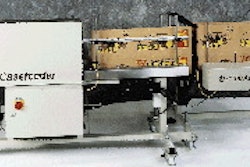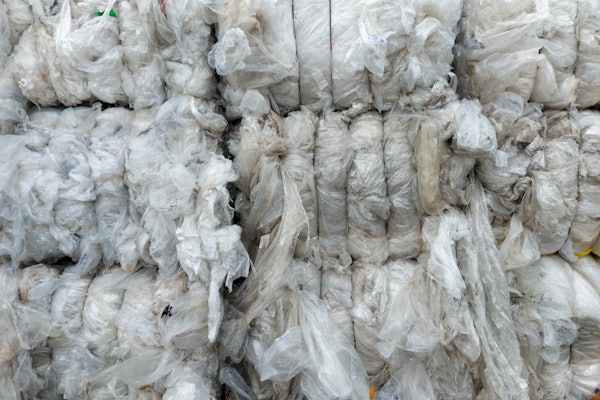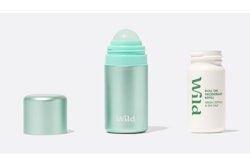As this century hurtles to a close, Packaging World asked experts at some leading packagers to envision the crucial technological advances in machinery and materials that are required to move packagers into the next millennium. There was only one rule: throw out the rulebook.
The number one area in need of a profound change, according to almost everyone we spoke with: quicker changeover. Although machinery builders have made great strides in this area, packagers say such capabilities haven't kept pace with the trend toward shorter, more frequent runs due to package proliferation and the quickening pace of new product launches.
What specifically do packagers need to make changeover easier and faster? No one disputes that no-tool changeover equipment is desirable, but some packagers want equipment that can take drop-in change parts with zero adjustments. At least that's what customers, many in the pharmaceutical industry, are telling Bill Cegles, president of C-F Packaging, a Greensboro, NC-based packaging consulting and systems design firm. For example, screw-on parts are time-wasters and should be eliminated, he says.
"Packagers just want to swap out the parts, push a button and start running," says Cegles.
A packager in the personal care industry wants to go one step further. "I've bought my share of change parts over the years, but I hope one day I don't have to buy any," says Paul Redwood, packaging systems manager at Unilever Home and Personal Care Products at its Raeford, NC, plant. "To me the ideal packaging machine would require no change parts."
As Redwood sees it, while change parts may add flexibility to a packaging machine, there's an insidious underside. "The idea of change parts tells our marketing groups that we can make something happen quickly, but all it does is introduce inefficiencies in our operation."
The changeover bottleneck also interferes with the heart of what many feel packaging's all about: using creative shapes, sizes and materials to garner consumer attention in an overcrowded marketplace.
"We actually don't commercialize a lot of the prototypes we develop in R&D because the shapes are so unique that today's packaging equipment won't handle it," says Joe Haake, R&D packaging manager with Coors Brewing Co., Golden, CO. This from the company that marketed a bottle in the shape of a baseball bat (see PW, May '96, p. 8).
Computerized maintenance
Maintenance improvements struck a chord with several interviewees as a key need. Redwood wants packaging equipment of the future to be "self-managed." Software running on the machine should be able to monitor the hours logged on the machine, and at the appropriate intervals, print out a schedule of preventive maintenance items that need servicing. Such software should also be able to produce a printout of the needed parts, including part numbers. This list could then be faxed to the vendor so that parts arrive in time for scheduled maintenance periods or shutdowns.
The software already exists, says Redwood, but he believes machinery builders need to do a better job of integrating such software into their machines, he says.
The increasing use of graphical operator interfaces, known as human-machine interfaces (HMIs) on modern packaging equipment, also creates an opportunity for simplifying maintenance. Already many machines can display blueprints of the relevant portion of the machine while a mechanic is making the repairs.
With networking, it will be possible for the mechanic to order a replacement part right from the HMI screen. The part number could be transmitted from the PC that runs the HMI, across the factory network and over a secure Internet connection right to the supplier.
HMIs will also provide opportunities for better training with electronic manuals embedded right into the controls of the machine.
"Operators are always sitting or standing in front of these machines," says Redwood. "Interactive video training as needed" would make this time productive.
Wish list for the future
Other ideas for the future were contributed by plant managers at Power Packaging, a contract packaging firm that's part of the Power Group:
* A vf/f/s machine designed to accept an auger filler or scale that's positioned closer to the seal jaw area to reduce drop time and increase speeds.
* An in-line integrity/leak tester for lidded, thermoformed cups.
* High-speed (1ꯠ+bpm) lasers that will code thin-wall bottles of polyethylene terephthalate.
* An automatic case packer that can readily change from traditional shippers to newer display-style cases.
* An inexpensive automatic scoop dropper, orienter and a detector that can look through plastic, glass or composite containers.
* High-speed, melt-on-demand hot melt glue systems without glue pots.
Of course, many of these ideas represent incremental improvements in technology. Some may even be available today. But the message to machinery builders is loud and clear: increase the flexibility, reduce footprints and bring down costs.
Materials for a new age?
But packagers aren't looking just to machinery for next-millennium solutions. There's still room for improvement in packaging materials, too. While plastics gain most of the attention in the race to develop new materials, the packaging wizards at Coors have high hopes that vendors might breathe new life into paper, glass and metal.
"One of the things we're looking for is different types of water-resistant technology for secondary paper packaging," says Ray Toms, packaging R&D project manager at Coors Brewing, Golden, CO. According to Toms, the ideal would be a paper that's water-resistant yet recyclable, without being too expensive.
As for glass? "Glass has been the same forever," says Toms. In particular, Coors would like to see some sort of invisible UV barrier material that could be impregnated into clear glass bottles.
"We've always struggled trying to do a clear glass product here at Coors because of our process," says Toms. Since Coors' beer contains no preservatives, it requires amber glass to block harmful UV light.
On the subject of impregnating glass with unique properties, how about a glass bottle that changes color when the beer is cooled to the proper temperature? "There's already temperature-sensitive plastic," says Toms. "Maybe it could be done with glass."
Interest in metal has picked up in recent years with breakthroughs in can-shaping technologies. However, developments have been tepid compared to what packaging seers at Coors envision.
"How about inexpensive, high-speed can shaping?" Coors' Joe Haake asks rhetorically. "I think we'd be willing to pay an upcharge, but not an exorbitant one."
And what about the obvious question-beer in plastic? "Plastics is a very dynamic area, and it's getting closer and closer," says Toms. "The question will be how does it fit the market? And will vendors be able to bring the cost down?"
Decorating advances
Another area that's ripe for breakthrough technology, according to Joe Haake, is container decoration. "Everybody likes the look of painted bottles but [applied ceramic labeling] is very slow and expensive," says Haake. Instead, he seeks an alternative that's fast, inexpensive and permits on-the-fly label, decoration and artwork changes.
If that seems too unrealistic, Ray Toms will settle for cost-effective pressure-sensitive labeling to replace inexpensive, metallized paper labels for high-volume applications. "There's got to be some new decorating technology that can replace the paper label, such as a direct in-line linerless pressure-sensitive label capable of being applied at high speeds," says Toms. "Yet it would have to keep costs in-line with what we're currently doing with paper."
Keep up R&D spending
Some of the technologies discussed in this story are available today, but still aren't widespread or are too expensive for large-scale use. Others have yet to emerge from the R&D lab.
However, the burden of packaging R&D can't fall on packagers alone, says Toms. Vendors must also invest in R&D, yet he perceives a tapering off of such investment in recent years.
"To me, vendor R&D is a major part of developing the next breakthrough in packaging. We're not going to have all the answers and I don't think we should. Certain vendors are really good at R&D but others need to be real aware that cutting their R&D budget can be harmful in the long term."





























